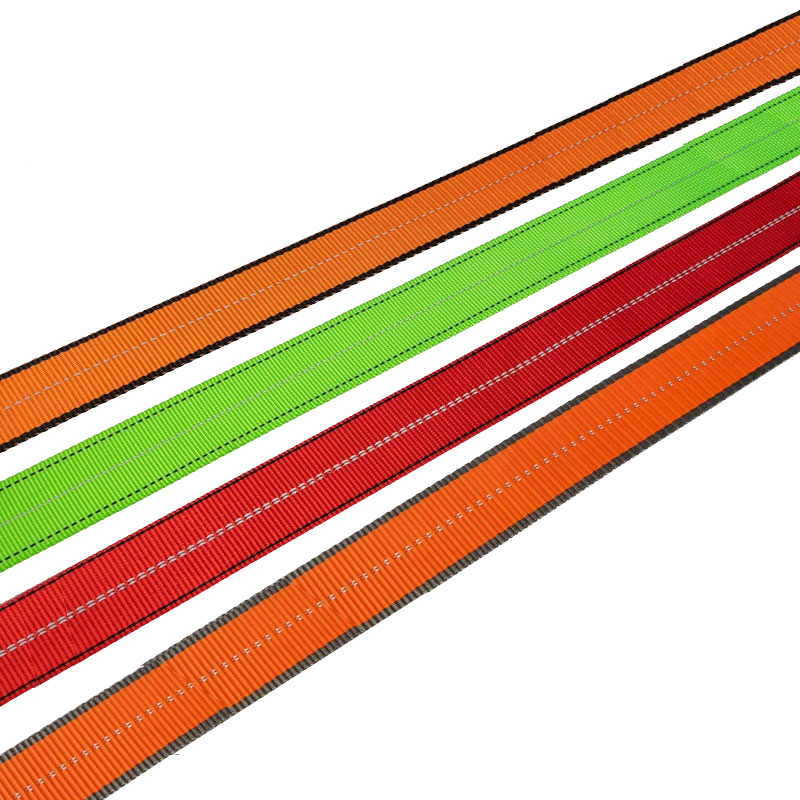
- English
- Español
- Português
- русский
- Français
- 日本語
- Deutsch
- tiếng Việt
- Italiano
- Nederlands
- ภาษาไทย
- Polski
- 한국어
- Svenska
- magyar
- Malay
- বাংলা ভাষার
- Dansk
- Suomi
- हिन्दी
- Pilipino
- Türkçe
- Gaeilge
- العربية
- Indonesia
- Norsk
- تمل
- český
- ελληνικά
- український
- Javanese
- فارسی
- தமிழ்
- తెలుగు
- नेपाली
- Burmese
- български
- ລາວ
- Latine
- Қазақша
- Euskal
- Azərbaycan
- Slovenský jazyk
- Македонски
- Lietuvos
- Eesti Keel
- Română
- Slovenski
- मराठी
- Srpski језик
How to Ensure the Environmental Protection and Sustainable Development of Polyester Webbing
2025-08-08
Polyester webbing is a versatile and durable material widely used in industries such as apparel, automotive, and outdoor gear. However, as environmental concerns grow, manufacturers and consumers alike must prioritize sustainability. This guide explores how to ensure the eco-friendly production and long-term sustainability of polyester webbing while maintaining high-quality standards.
Key Features of Sustainable Polyester Webbing
To achieve environmentally friendly polyester webbing, consider the following parameters:
1. Material Composition
-
Recycled Polyester (rPET): Made from post-consumer plastic bottles, reducing waste.
-
Bio-based Polyester: Derived from renewable resources like corn or sugarcane.
-
Low-impact Dyes: Non-toxic, water-saving dyeing processes.
2. Manufacturing Process
-
Energy-efficient Production: Use of solar or wind power in manufacturing.
-
Water Recycling Systems: Minimizing water waste during dyeing and treatment.
-
Eco-friendly Coatings: PVC-free and phthalate-free finishes.
3. Certifications & Standards
| Certification | Description |
|---|---|
| OEKO-TEX® | Ensures harmful substances are below safety limits. |
| Global Recycled Standard (GRS) | Verifies recycled content in products. |
| bluesign® | Focuses on sustainable textile production. |

How to Choose Eco-Friendly Polyester Webbing
When selecting sustainable polyester webbing, look for:
✔ High recycled content (minimum 50% rPET)
✔ Low carbon footprint in production
✔ Compliance with international eco-standards
Frequently Asked Questions (FAQ)
Q: What makes polyester webbing environmentally friendly?
A: Eco-friendly polyester webbing uses recycled materials, reduces energy consumption, and avoids harmful chemicals in production.
Q: Can polyester webbing be recycled after use?
A: Yes, polyester webbing is recyclable, especially if made from rPET. Proper disposal through textile recycling programs ensures sustainability.
Q: How does polyester webbing compare to nylon in terms of sustainability?
A: Polyester webbing has a lower melting point, requiring less energy to produce. Recycled polyester also has a smaller environmental footprint than virgin nylon.
Q: Are there biodegradable options for polyester webbing?
A: While traditional polyester is not biodegradable, some manufacturers offer bio-based polyester blends that break down faster under specific conditions.
Q: How can I verify if polyester webbing is truly sustainable?
A: Check for certifications like GRS, OEKO-TEX, or bluesign® on product labels, and request detailed environmental impact reports from suppliers.
Sustainable polyester webbing is achievable through responsible material sourcing, energy-efficient manufacturing, and adherence to eco-certifications. By choosing environmentally conscious options, businesses can contribute to a greener future without compromising quality.
For more details on our eco-friendly polyester webbing solutions, contact us today!



